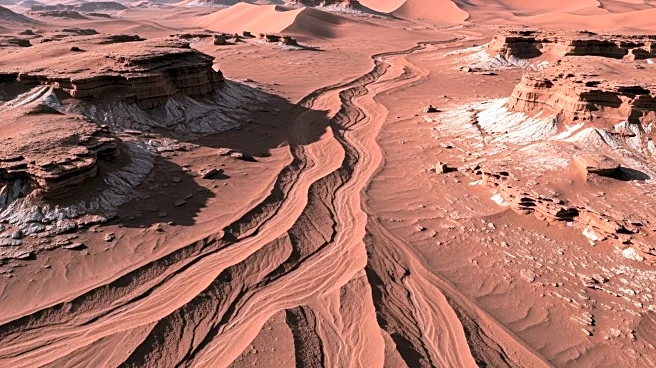What's Happening?
Planetary scientists have uncovered a fascinating phenomenon on Mars where blocks of carbon dioxide ice appear to carve mysterious gullies on the planet's surface. These gullies, resembling the burrowing
paths of fictional sandworms from the movie 'Dune,' are formed as slabs of dry ice melt and slide along Martian dunes. The process occurs during the Martian spring when temperatures rise, causing the sand to heat up and the ice to sublimate, turning directly from solid to gas. This sublimation creates pressure that propels the ice downslope, carving trenches and pushing sand aside. The study, conducted by researchers at Utrecht University, rules out the possibility of liquid water being responsible for these formations, offering a purely physical explanation for the gullies.
Why It's Important?
This discovery is significant as it provides insight into the geological processes on Mars, demonstrating that the planet can still reshape itself without the presence of water. Understanding these processes is crucial for planetary science, as it helps researchers draw parallels between Martian and Earth landscapes. The findings also have implications for the study of potential Martian habitability, as they suggest that water is not necessary for the formation of certain geological features. This knowledge could influence future exploration missions and the search for life on Mars.
What's Next?
Further research is likely to focus on understanding the full extent of dry ice activity on Mars and its impact on the planet's surface. Scientists may conduct additional simulations to explore different environmental conditions and their effects on dry ice movement. These studies could lead to new insights into Martian climate patterns and the potential for similar processes on other celestial bodies.
Beyond the Headlines
The study highlights the importance of considering non-water-based geological processes in the search for extraterrestrial life. It challenges the traditional view that water is essential for life and geological activity, opening up new avenues for research into alternative life-supporting environments.













